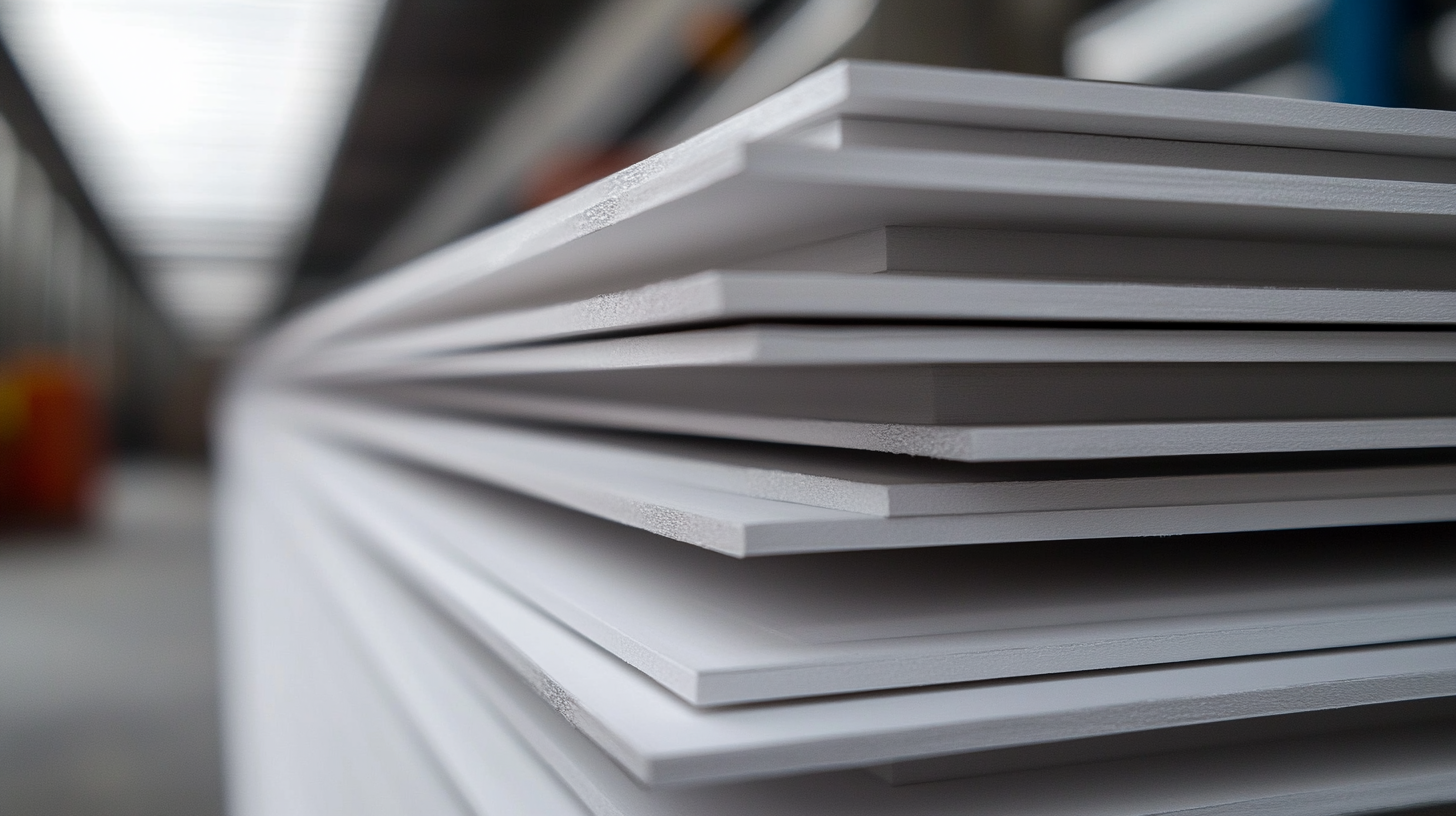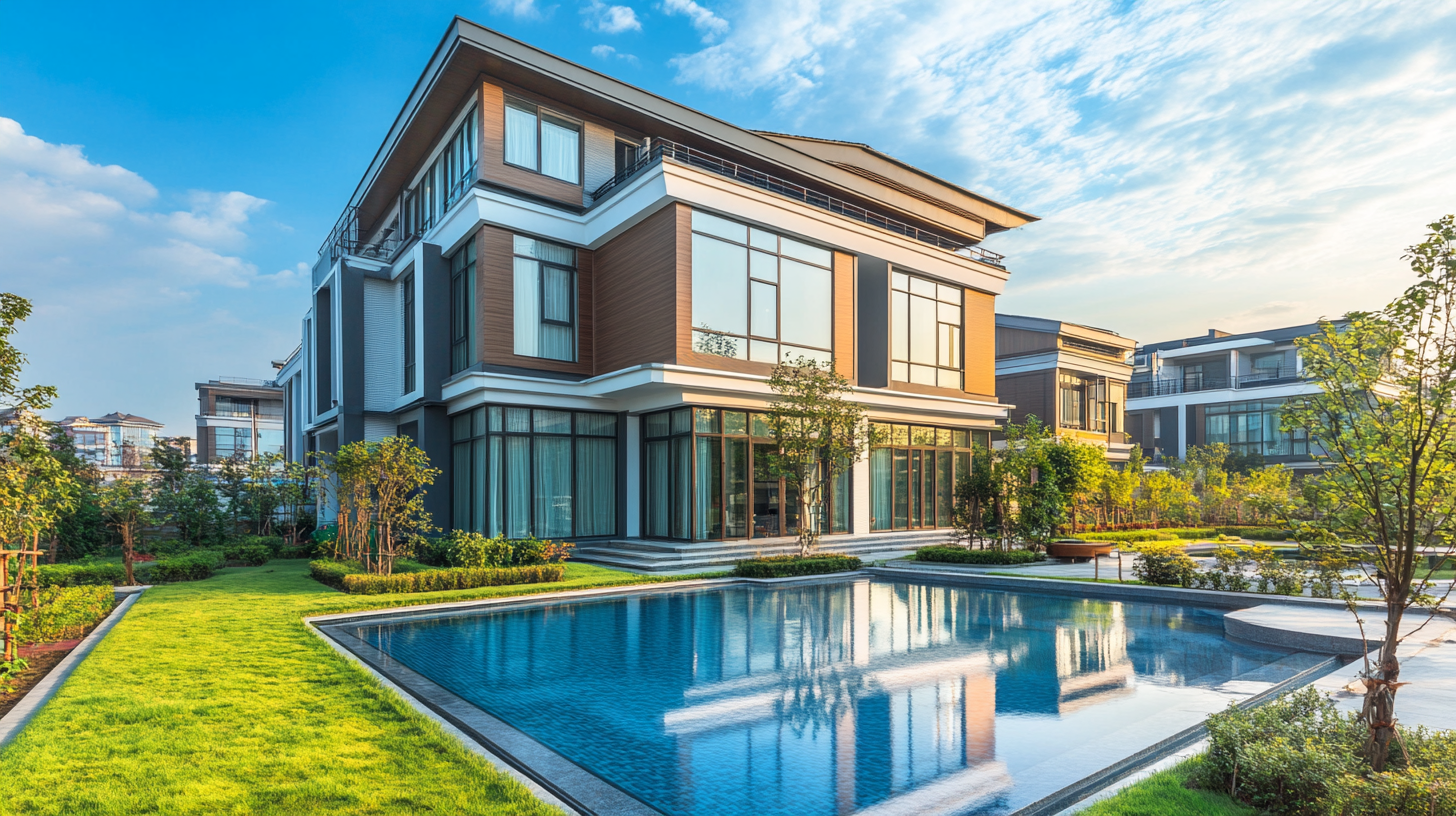In recent years, the global construction industry has witnessed a significant shift, particularly in the demand for PVC Wall Cladding Sheets. Despite the ongoing Sino-US tariff challenges, China's manufacturing sector has demonstrated remarkable resilience and adaptability. According to a report from MarketsandMarkets, the global PVC wall cladding market is projected to reach USD 35.5 billion by 2026, with a compound annual growth rate (CAGR) of 8.1% during the forecast period. This growth highlights not only the increasing acceptance of PVC materials due to their durability and aesthetic appeal but also underscores the strategic efforts by Chinese manufacturers to innovate and expand their export capabilities. As tariffs create obstacles, China's ability to maintain competitive pricing and leverage technological advancements has enabled its PVC wall cladding sheet industry to thrive. The resilience observed within this sector serves as a testament to the enduring strength of China's manufacturing prowess, even in the face of geopolitical turbulence.

China's PVC wall cladding industry has shown remarkable resilience despite facing significant challenges from Sino-US tariffs. The imposition of tariffs has affected various sectors, prompting many manufacturers to rethink their strategies. However, Chinese manufacturers have adeptly adapted to these economic pressures by focusing on innovation, enhancing production efficiency, and embracing sustainable practices to differentiate their products in a competitive market.
One of the key factors driving growth in this sector is the increasing demand for PVC wall cladding as a versatile and cost-effective building material. With its durability, aesthetic appeal, and low maintenance requirements, PVC cladding is becoming a preferred choice for both residential and commercial construction. Additionally, the industry has witnessed a surge in exports to other international markets, as companies diversify their customer bases beyond the US. This strategic pivot not only mitigates the impact of tariffs but also positions China as a global leader in the PVC wall cladding market.
The Sino-US trade tensions have significantly impacted global supply chains, yet the manufacturing sector in China has exhibited remarkable resilience, particularly in the production of PVC wall cladding sheets. To mitigate the effects of tariffs, manufacturers are adapting their strategies by diversifying their supply sources and enhancing local value addition. This shift not only helps to cushion the impact of incoming tariffs but also positions Chinese companies to leverage their production capabilities more effectively in response to global market demands.
Moreover, Chinese manufacturers are increasingly investing in advanced technologies and sustainable practices, aiming to improve both efficiency and product quality. Implementing automation and embracing innovative materials have become focal points for businesses striving to maintain competitiveness despite external pressures. By refocusing on domestic resources and collaborating with local suppliers, China's PVC wall cladding industry is not only navigating tariff challenges but also fostering long-term growth and sustainability. These strategic adjustments reflect a broader trend in manufacturing, where agility and innovation become crucial for success in an unpredictable trade landscape.
This chart illustrates the year-over-year growth in the production and export of PVC wall cladding sheets in China, highlighting the impacts of Sino-US tariffs on manufacturing strategies from 2018 to 2023.
In the face of Sino-US tariff challenges, China's PVC wall cladding sheets sector has demonstrated remarkable resilience, attributed largely to innovation and adaptation. As tariffs imposed by the United States have altered trade dynamics, manufacturers have increasingly turned to advanced technologies and sustainable practices. This has led to the development of new formulations and production techniques that not only meet domestic demand but also enhance export capabilities, showcasing a commitment to remain competitive in global markets.
Moreover, the emphasis on sustainability has prompted industry players to explore eco-friendly materials and processes. By integrating recycled components and minimizing waste, companies in China's PVC sector are aligning with international standards for environmental responsibility. This strategic shift not only helps in overcoming tariff barriers but also positions Chinese manufacturers as leaders in green innovation within the construction materials market. As they prioritise adaptability and creative problem-solving, the future of the PVC wall cladding industry in China looks promising, marked by robust growth and increased global presence.
| Year | PVC Production (Million Tons) | PVC Wall Cladding Sheets Export Value (Million USD) | Growth Rate (%) | Major Export Markets |
|---|---|---|---|---|
| 2020 | 18.6 | 450 | 5.0 | USA, Europe, Southeast Asia |
| 2021 | 19.2 | 500 | 11.1 | USA, Japan, India |
| 2022 | 20.0 | 550 | 10.0 | USA, UK, Australia |
| 2023 | 21.5 | 600 | 9.1 | USA, Canada, Germany |
China has established itself as a formidable player in the global PVC wall cladding market, even amid the complexities posed by Sino-US trade tariffs. The country's ability to adapt and innovate has allowed it to maintain a significant competitive edge. Chinese manufacturers have invested heavily in advanced production technologies and sustainable materials, enabling them to deliver high-quality products at competitive prices. This focus on innovation not only enhances the aesthetic value and durability of PVC wall cladding sheets but also aligns with the increasing global demand for eco-friendly building materials.
Moreover, China benefits from a robust supply chain and an extensive raw material base, which further fortify its position in the global market. The ability to rapidly scale production in response to rising global demands provides Chinese manufacturers with an additional advantage. As international markets look for reliable suppliers who can offer quality products with timely delivery, China remains a highly appealing option. The ongoing emphasis on research and development within the sector is expected to drive further advancements, ensuring that China's PVC wall cladding sheets will continue to captivate consumers worldwide.

China's PVC wall cladding market has shown remarkable resilience in the face of ongoing Sino-US tariff challenges. Despite the stalled trade talks and heightened tensions, the demand for PVC wall cladding remains strong due to its versatility and cost-effectiveness. Manufacturers in China are adapting to the shifting market dynamics, focusing on innovation and sustainability to maintain their competitive edge. The ongoing tariff conflict, while detrimental to certain sectors, has also pushed Chinese companies to explore new avenues for growth and expansion, such as increasing exports to other markets unaffected by tariffs.
Looking ahead, the future prospects for China’s PVC wall cladding market post-tariffs remain cautiously optimistic. Analysts believe that as the trade landscape continues to evolve, there will be opportunities for domestic manufacturers to strengthen their position. With growing environmental concerns prompting a shift towards recycling plastics, the PVC market could benefit from increased demand for eco-friendly solutions. Furthermore, as companies adjust to the legal limbo surrounding tariffs, there may be a chance for Chinese manufacturers to innovate and enhance their product offerings, ultimately reshaping the market for PVC wall cladding in a highly competitive global environment.

